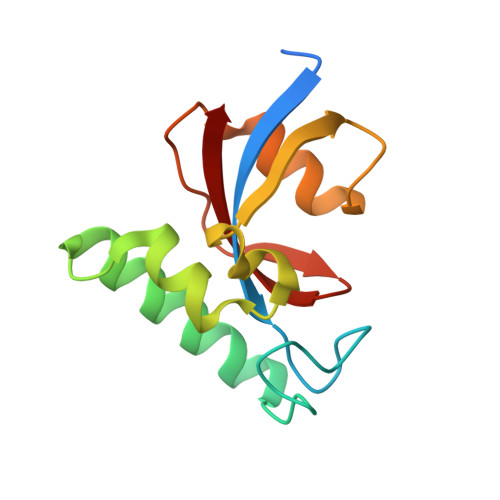Structure-based design of novel human Pin1 inhibitors (III): Optimizing affinity beyond the phosphate recognition pocket.
Guo, C., Hou, X., Dong, L., Marakovits, J., Greasley, S., Dagostino, E., Ferre, R., Catherine Johnson, M., Humphries, P.S., Li, H., Paderes, G.D., Piraino, J., Kraynov, E., Murray, B.W.(2014) Bioorg Med Chem Lett 24: 4187-4191
- PubMed: 25091930
- DOI: https://doi.org/10.1016/j.bmcl.2014.07.044
- Primary Citation of Related Structures:
4TYO - PubMed Abstract:
The design of potent Pin1 inhibitors has been challenging because its active site specifically recognizes a phospho-protein epitope. The de novo design of phosphate-based Pin1 inhibitors focusing on the phosphate recognition pocket and the successful replacement of the phosphate group with a carboxylate have been previously reported. The potency of the carboxylate series is now further improved through structure-based optimization of ligand-protein interactions in the proline binding site which exploits the H-bond interactions necessary for Pin1 catalytic function. Further optimization using a focused library approach led to the discovery of low nanomolar non-phosphate small molecular Pin1 inhibitors. Structural modifications designed to improve cell permeability resulted in Pin1 inhibitors with low micromolar anti-proliferative activities against cancer cells.
Organizational Affiliation:
Oncology Medicinal Chemistry, Pfizer Worldwide Research & Development, San Diego, CA 92121, USA. Electronic address: alexguo01@gmail.com.
















